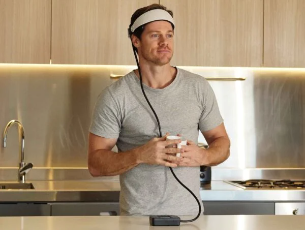Being able to swim increases safety and opens up a world of leisure opportunities. It's a vital life skill. Regardless of your experience level, it's critical to understand the typical errors that can impede your ability to improve your swimming during classes.
This article will delve into seven common mistakes to avoid, helping individuals make the most of their swimming lessons and become more confident swimmers.
1. Neglecting Proper Warm-Up and Stretching
The significance of stretching and warming up before taking swimming lessons Sydney is something that is often disregarded. Many swimmers go right into the water without warming up their muscles sufficiently. Muscle aches and cramps could result from this error. Prioritize stretching and light cardiac activity for a few minutes before using the pool to increase flexibility and reduce the risk of injury.
2. Incorrect Body Positioning
The key to effective swimming is maintaining the proper body alignment. Beginners frequently make the error of holding their heads too high or too low, which causes drag and slows down their pace.
Maintaining your head in a neutral position and your body parallel to the water's surface are the keys to good body positioning. This increases your body's efficiency and helps you swim more efficiently overall.
3. Holding the Breath Too Long
While having good respiratory control is essential when swimming, holding your breath for a long time can cause anxiety and pain. Holding their breath until they are virtually out of the air is a common mistake swimmers make, and it can cause panic. Instead, work on your rhythmic breathing by tilting your head to the side and inhaling fast while exhaling evenly while your face is submerged.
4. Neglecting Proper Arm Movement
Propulsion and speed in the water are mostly dependent on efficient arm movement. Typical errors include reaching too far during a stroke or crossing the arms over the body's centerline.
Maintaining your arms parallel and shoulder-width apart can help you move your arms more fluidly and powerfully. You may improve your swimming performance and overcome negative habits by doing drills focusing on good arm technique.
5. Overlooking Leg Kick Technique
Swimmers frequently undervalue the significance of a powerful, well-coordinated leg kick. Your balance and general propulsion may be affected if you kick excessively or insufficiently. Ensure your leg kicks are rhythmic and controlled, coming from your hips rather than your knees. Better stability and forward motion in the water will result from this.
6. Failure to Practice Consistently
Any skill that you want to master, including swimming, requires consistency. A common error students make is to practice infrequently, which impedes their advancement. Strive for consistent, well-organized practice sessions to enhance technique and develop muscle memory. Whether you practice independently or in official swimming lessons, consistency is key to improving your performance.
7. Ignoring Water Confidence Building
It takes time to gain confidence in the water, and some swimmers undervalue the significance of doing so. Progress might be hampered by fear and worry, so give the water time to become used to it. Practice floating in shallow water first, then work up to more difficult tasks. Developing water confidence is essential to becoming a confident and skillful swimmer.
Navigating the Waters of Learning to Swim - Enhancing Skills and Enjoyment
Acquiring the skill of swimming is a fulfilling undertaking that necessitates perseverance, repetition, and a sharp sense of caution. Swimmers can improve their experience in the water, sharpen their skills, and eventually gain confidence and proficiency by avoiding these typical blunders.
Regardless of your experience level, correcting these typical mistakes will make learning to swim more pleasurable and efficient.













